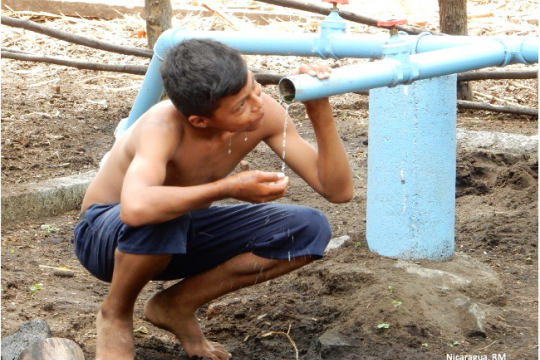- International virtual event on environmental economics allowed to communicate scientific results of studies executed by researchers from EfD-CA
July 7, 2020. On June 27 and June 29, researchers from the Environment for Development Initiative in Central America (EfD-CA), participated in the international conference of the European Association of Environmental and Resource Economics (EAERE).
Róger Madrigal, director of EfD-CA and researcher from the Tropical Agricultural Research and Higher Education Center (CATIE, by the Spanish acronym) participated communicating the main findings of the research study titled How do social and environmental conditions interact to determine water delivery? Evidence from community water organizations (CWOs) in Guatemala, Nicaragua and Costa Rica. Besides Madrigal, other researchers such as Katrina Mullan, from the University of Montana; Eduardo Pacay, from EfD-CA; Subhrendu K. Pattanayak, from Duke University, and Juan Robalino, from EfD-CA and the University of Costa Rica, were co-authors of this research paper.
The research analyzed 154 CWOs randomly selected from the driest areas of Costa Rica, Guatemala and Nicaragua. Results suggest that the use of volumetric pricing provides positive incentives for reducing excessive water consumption and improving the performance of CWOs. Despite the potential for using volumetric pricing as a policy tool for managing water scarcity, the results indicate that the adoption of volumetric pricing depends on the institutional capacity of CWOs and specific ecological and climatic conditions affecting the communities served by these rural providers.
Juan Robalino, a researcher from the University of Costa Rica and a senior researcher at EfD-CA, presented the results from a research study titled Do protected areas reduce the incidence of hydrological disasters?
The results found by Robalino, Eduardo Pacay, Matias Paggio and Taylor Rickets emphasize that natural protected areas scale down the number of floods or landslides in territories where the protected areas are located upstream the human population, thanks to the water regulation services provided by these protected areas.
The participation in the EAERE event is relevant to continue sharing knowledge and information that can help different stakeholders from our region to take science-based decisions for the well-being of people and nature.
